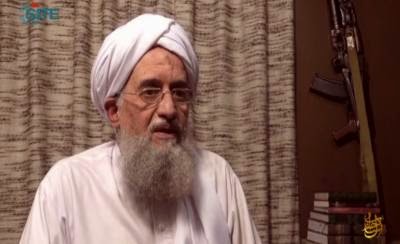Once again, the conventional wisdom in Washington about al-Qaeda (AQ) and the broader jihadi terrorist threat has been proven wrong. The wishful thinking passing for analysis since the beginning of the year that the split within the movement resulting in the expulsion of the Islamic State of Iraq and Syria (ISIS) from the AQ fold would simultaneously weaken both Core AQ and ISIS—now pretentiously re-named the Islamic State (IS)—has been dramatically disproven by the latter’s lightning thrust into Iraq and seizure of the northern and western parts of the war-torn country.
But, the crystallization of the serious threat posed by IS in the Levant and Mesopotamia should not blind us to the persistent challenge coming from Core AQ. Its quiescence should not breed complacency or over-confidence that we no longer need be concerned with Ayman al-Zawahiri and his followers, as this blog post explains.
A Healthy Bench That Is Changing and Keeping Pace With The Times
“Al Qaeda’s leadership has been decimated and defeated in Afghanistan,” White House Press Secretary Josh Earnest recently declared—repeating a claim that the Obama Administration has been making for years. But it is now apparent that Core AQ has a deeper bench of players than many in Washington have long maintained. The core is able to draw on this bench to replenish its decimated ranks, often with individuals who, while mostly unknown outside the movement, nonetheless have tremendous credibility within it. Many are veterans of the Afghan-Soviet War and, accordingly, have at least thirty years of experience as mujahideen fighting the movement’s variegated foreign and domestic enemies. Their ascendance within AQ to positions of importance demonstrates that even while the U.S. drone campaign has made deep inroads among the established AQ senior leadership, the movement still possesses the capacity to replace eliminated commanders with competent successors.
To ensure its longevity in ways involving rank-and-file fighters, Core AQ has begun to diversify its principle recruitment pool. For some time, al-Shahab (“The Clouds”), AQ’s highly active media and outreach arm, has been producing more messages and propaganda in Urdu than in Arabic. Indeed, Core AQ has been deliberately recruiting middle and upper-middle class Pakistanis, often with university degrees in engineering and the hard sciences.
Nasir al-Wuhayshi, the founder and commander of al-Qaeda in the Arabian Peninsula (AQAP), as AQ’s deputy commander is indicative of a revitalized strategy to extend the movement’s reach deeper into the Middle East and Africa. By creating an ancillary regional headquarters to direct, coordinate and support operations, Core AQ is able to project force and exert some coordination and have some influence on battlefields remote from its south Asian base.
Despite AQ’s current focus on local and regional conflicts, the movement has not lost its desire to target the U.S. and the West. The intention to attack further afield remains undiminished—albeit temporarily put on hold until these situations either evolve or resolve themselves. AQAP’s efforts and intentions, in this regard, are unrelenting. But, as a result of the upheaval in North Africa and the Levant in particular, it is possible that other affiliates may use these bases as potential launching pads for attacks in Europe and even the U.S.
More, the proliferation of some 10,000+ foreign fighters in Syria—including U.S., Canadian, British, French, Belgian, German, and Swedish nationals or permanent residents from those countries, along with larger numbers from North Africa, the Caucasus, and elsewhere in the Middle East—necessarily raised the prospect of them returning to their home or adopted countries to establish the infrastructure needed for or for themselves to participate in future terrorist attacks. Their ability to move freely across the European Union, or perhaps even to travel to the U.S. without suspicion, also presents new security concerns and challenges.
Long Term Strategies
AQ has thus sought to think strategically and advance an operational concept designed to ensure its longevity. In this respect, there appear to be three key dimensions to its strategy:
The viability of this strategy has been commented upon by fellow INSITE blogger, Dr. Mary Habeck, formerly of the U.S. National Security Staff. As Dr. Habeck has cogently argued:
It took the U.S. and allied invasion of Afghanistan to destroy AQ and depose its Taliban clients; the U.S.-backed Sunni uprising to defeat AQ in western Iraq in 2007 and 2008; and the French military’s 2013 intervention in Mali to unseat al-Qaeda in the Islamic Maghreb’s (AQIM) attempt to impose its reign over the African country. Today, we see how U.S. airpower is required both to slow the advance of IS in northern Iraq and prevent genocide of religious minorities in that region.
Also important to note is Syria’s prominent role in AQ’s strategy to victory. The group’s trajectory, in respect to the region, entails the following stages:
It is disturbing to map the accuracy of this strategic trajectory dating from 2005 and to realize that, from AQ’s vantage point, we are indeed in the final stage of declaring the Caliphate.
Conclusion
The likelihood that we face a two-pronged threat from two powerful AQs and not just one will surely present new challenges and difficulties to national militaries, intelligence and security agencies, and law enforcement already stretched thin by a diversifying and growing movement—multiplying across countries and regions while laboring under diminished budgets and resources after thirteen years a patently unfinished war on terrorism.
Indeed, the possibility that core AQ and IS might yet re-unite—creating a combined terrorist threat of a geographical and kinetic magnitude hitherto unimagined cannot be completely dismissed.
Source: Siteintelgroup



